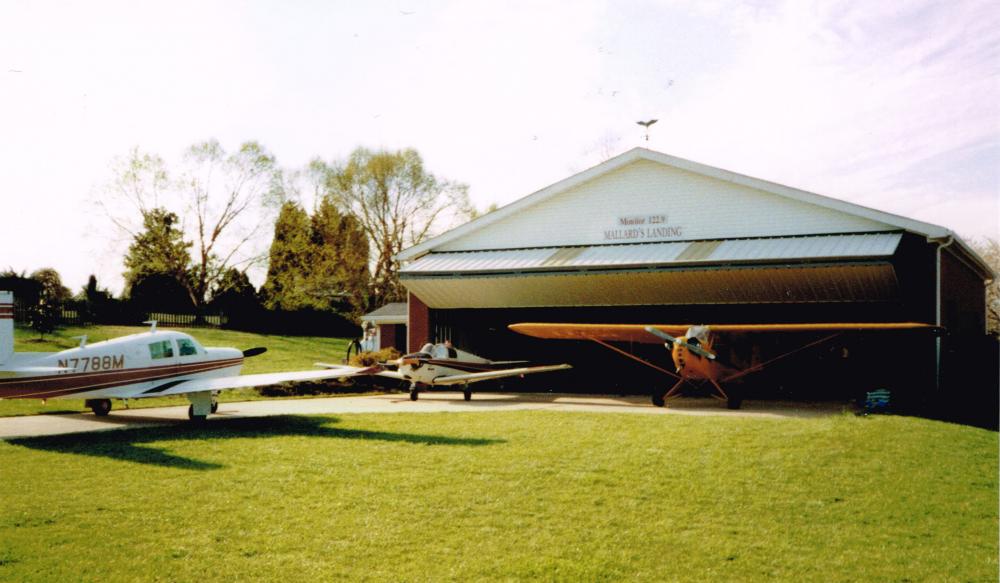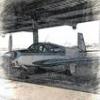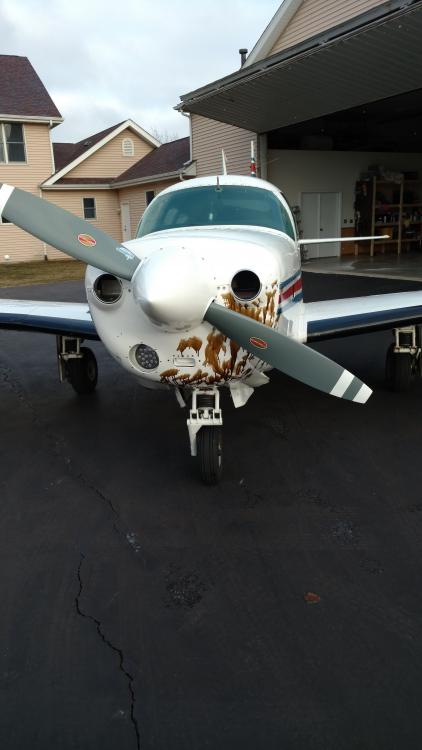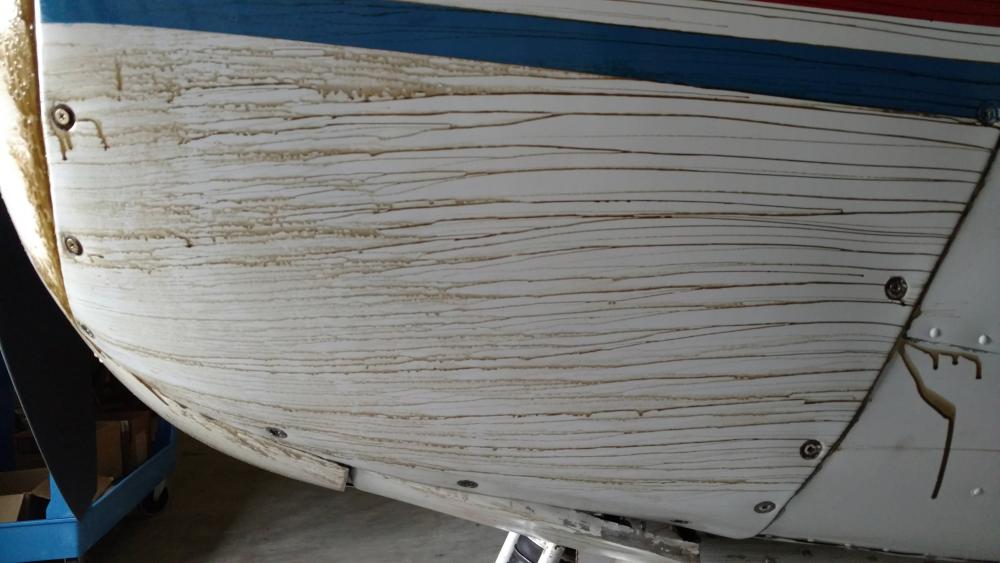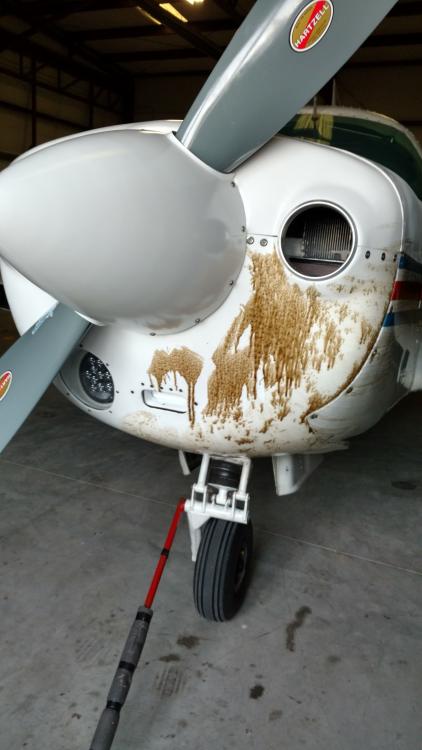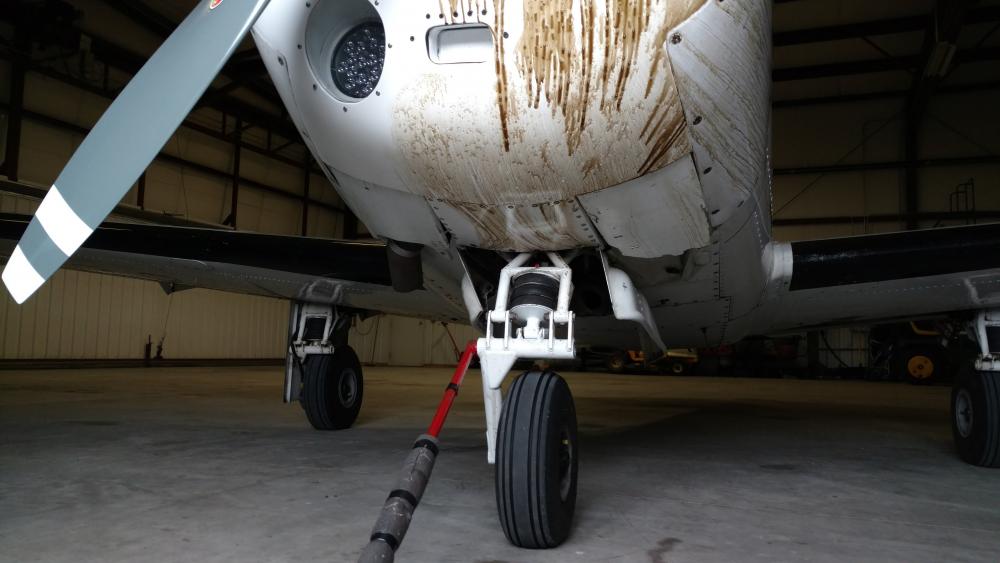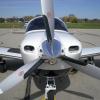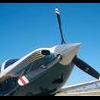Leaderboard
Popular Content
Showing content with the highest reputation on 01/24/2018 in all areas
-
11 points
-
There is absolutely no way I believe you are getting 140-145 knots in a fixed gear Piper Archer unless you are turbocharged at FL200 or in a dive. But yes, a 201 will nicely cruise at 155-160 knots which is about 40 knots faster than any Piper Archer that I've ever flown.8 points
-
Jolie, panel looks great. For safety reasons, however, and because they have become so inexpensive, I wouldn't fly any serious IFR until you install a second backup attitude indicator in place of the turn coordinator. While we train for needle, ball, and airspeed, there is now no need to put ourselves at additional risk by flying without a backup AI to use in an emergency.7 points
-
This is so on the money. I also learned to fly steam 35 years ago. I am all in on the argument that the 750/650/440 versus 530/430 is not all that much of a difference. I own a 750 and train my students on a 430. Like them both. But when it comes to PFD/MFD (I have 3 aspens and a G5), there is simply no comparison to the steam it replaced. I never found the tapes hard to read? Guess that is just me? But information and scan in hard IFR is 10000000000000000% easier. Guess I am a 56 year old millineal now lol7 points
-
First an Instrument rating and now and IFR GPS ! Way to go!! You've probably done the BUELT Four departure many times by now, but now its going to be a snap to set up in your GPS to fly it. Enjoy it and access to what must be 10x as many procedures with an IFR GPS. A lot to learn, but an amazing more amount of capability comes with the knowledge.5 points
-
This summer I purchased a 530W from a friend and then won an auction at EAA's Gathering of Eagles [OSH] for a GTX 335. After I got my IFR I decided to install. I chose Barber Aviation in Madera, CA. They quoted me a reasonable price, and best yet a 5-7 day turnaround time. I also had a Stratus dual USB installed. I am happy to say that it was super cool to fly Miss Maggie home yesterday with the new-to-me technology. I can recommend Chris Tharp and Barber Aviation wholeheartedly. They have a maintenance facility and an avionics shop. Next week will be a trip to Yuma for the Gunfighter's Formation Clinic. Life is good. #MooneyZoom4 points
-
My boss’s Piper arrow IV with an IO360C1C6 (200hp) does 138 KTAS and that’s near book speed. It also has 20 more HP and retractable gear than an Archer. It’s a common thing for an owner to inflate the performance numbers of his plane 10-15 knots while discounting the other’s plane by an equal amount, then declaring them the same speed. I was at Oshkosh a few years ago and a gentleman sitting at our lunch table started bragging on his Cardinal RG. It’s a fine plane, huge cabin all that, but I’ve got a hundred hour or more in them and they’re 135 knot planes. Same motor same prop and all that big cabin and two doors and gear wells drag has to go somewhere. He is going on and on about the superiority of the type, and then he said “it’s the the same speed as a Mooney”. A minute later he asked what kind of plane we had, a 201 I replied. I added that we just finished the Airventure Cup race and we did 170 something knots over 450 miles. No tail wind was ever found that offset the climb. They start the timing from the departure end of the runway and my plane cant climb for shit. And it’s verified on several races at 170 plus. He turned kinda pale and quit bragging on the cardinal RG. I was just eating, wasn’t looking for a fight. But you can insult my mother but you never mess with a man’s vehicles.4 points
-
4 points
-
Great new youtube video on how to manage mixture and fly LOP and ROP: The most information dense filled video on the topic I can remember seeing in some time. The only real thing I would offer to add is Gami's recommend tablel on both how far to be LOP and ROP for any percent power; available here: afms gami injectors rev ir.pdf Incidentally the GAMI FAA approved mixture management is excellent guidance regardless of whether or not use Gami injectors or even if your not fuel injected. Its just that without good mixture distribution (<=0.5 GPH gami spread) an engine won't be able to fly very far LOP, if at all LOP (i.e. where all cylinders are LOP). But virtually any IO-360 can and most of the higher performance Continentals can but may require a little help. But otherwise Martin does a great job of both communicating and illustrating a wealth of information on the subject matter.3 points
-
Dropped the plane off for overhaul today and had my first go at hitchhiking a ride to Memphis. Success. Not murdered. People are good. Sent from my SM-G920V using Tapatalk3 points
-
I understand there's a Mooney owner up near Philadelphia who has poured a ton of money into an F model. Reportedly, his glass is seriously out of date, but serviceable. He's thinking seriously of going to an all Garmin panel because of advice from a dentist. Offer him your C as a "great, low-priced up-grade platform" + $10K and he's sure to go for it. @Marauder???2 points
-
I’d put a turbo prop say 600 hp Sent from my iPhone using Tapatalk2 points
-
Paul, I agree with you - but couldn't help remembering your comment when I was in pre-buy for 231DH Ok, I realize that is a different situation, but couldn't resist poking a bit of fun2 points
-
You make some good points, but there problem with this approach. First, once an "annual inspection" (FAA definition) starts, the plane is out of commission until signed off or a list of discrepancies is given and rectified. If the seller is very smart, he should never agree to have his plane potentially grounded with the need to spend his money to get it back. So until the ownership has shifted to the buyer, it is smart not to start an annual. In the same vein, if the annual starts, and wing spar corrosion is immediately found, the smart buyer should say "stop right here; deal's off". Do you want to pay for a full annual at that point. My belief is that a pre-purchase examination should be done, starting with a short list of "deal killing" items, certainly including corrosion, and perhaps borescope, fuel tank leaks, etc. If it passes, then go on to the next level, with the things that will involve substantial cost. These might include all the major things covered by an annual. You are then in a position of agreeing with the seller as to what things each of you will pay for, or if the deal is cancelled. Then, if the deal is finalized, have the examination flipped to an annual. The price will likely be virtually the same as an annual. Perhaps we are saying close to the same thing, but the terminology is important.2 points
-
Mites are very easy to fly. Unlike the M-20, the M-18 has a control stick. Once they are modified from the original configuration, they're hard to keep within certified weight limits. The ones I'm familiar with are routinely flown overweight. While tall pilots fit just fine, the 1955's provide a bit more headroom. Fat pilots will push the max weight limit. A few Mites were factory equipped with the Continental A-65-12 with generator, starter and lights. These are rare finds. Other Mites have been modified, but most Mites do not have electrics. If you ever get a chance to fly a Mite, do it. They are fun.2 points
-
He's probably llooking at groundspeed, and forgetting that the wind doesn't always blow from behind, or that strong.2 points
-
Hey all, Here is my latest installment of AOPA Opinion Leaders. We all have far more in common than we might think. https://blog.aopa.org/aopa/2018/01/23/the-bottom-line-we-all-started-in-the-same-place/2 points
-
Its a shame tornado alley never did their TN treatment to the Ovation. That would be the fastest Mooney.2 points
-
You are correct, but I think I’m going to look at something similar to connect to my new carb air box and make it a bit easier to mod.2 points
-
Just got off the phone with Corey at Tru trac; (479) 751-0250 Expect June or July time frame. cost is: 5,000 for everything's except install and you have to pay EAA for the STC since they pushed it through. That is only 100.00 System is 100% self contained. Has GPSS and a track mode, also altitude hold. No other instruments except a GPS to to provide inputs. In track mode you are able to fly a vector "Victor" Sales guy said about 20 hours for install. It will follow the magenta line and do the approach, similar to a flight director and for around $7,000 installed.2 points
-
2 points
-
A 360 degree video of flying my Mooney M20J up the Hudson and East River in NYC. Look in all directions like you're there!1 point
-
Very useful video, Paul. I was taught LOP operations by one of Tornado Alley's test pilots. I flew into OKC via airline and he picked me up in our recently upgraded (normally aspirated) NWALL Bonanza (Northwoods Airlifeline) and had me fly it back to Ada. By the time I got KADH he and I were comfortable with my operation of the new engine. We did lunch and a short ground school and I then flew it back to the U.P. of Michigan, after a decent nap due to a very early start and afternoon ground temps in Ada in the summer time that were ungodly. I could never get my Rocket to run there though. By the time I cried uncle George had sent me 3 or 4 injector changes and I was getting concerned all the "TEST" time was spending too much time around peak and I had more likelihood of damaging the engine from "trying" to set up the engine for LOP ops. By that time George had admitted the TSIO520NB was a challenge to get running LOP nicely due to the upflow intake system. I DID keep the GAMA injectors though, and am over 2,000 hours on a 1600 hour TBO engine. Thanks for posting. I will be sharing with my NWALL pilots that DIDN'T get the hands on training for our Bonanza. Tom1 point
-
The biggest thing is how long you plan on keeping it and how much you fly. If you are flying 100 hours a year +/- and plan on keeping for at least another 5 years then do it. You will get the enjoyment of the new toys for that time. No you will not get you money out of it but any upgrades to avionics or anything else for that matter in any plane you will not get you money back. Just like when you drive that new car off the lot it will never be worth what you paid for it ever again. Do you have the shot gun panel or is a standard 6 pack? If standard 6 pack I'd keep the flight instruments and work on GPS, ADSB first. Going with a G-1 engine monitor will tell you most everything you need to know about the engine go up to the G-2 and you get fuel flow and tantalizer as well for a reasonable cost the remaining stock gauges are fine for everything else. Yes a new JPI would be very nice but lots of AMUs. Auto pilot wait until the new STCs are available and see where the cost go. Getting an STEC 30 right now is expensive. Like nothing else in aviation is expensive.1 point
-
Cuesta doesn’t really have any programs like that but Michael Phillips in CMA is a great instrument instructor and less than an hour away by Mooney. He just got a write up in AOPA Pilot this month. He has a red bird simulator but I don’t know what kind of avionics it simulates since we just flew in my plane. You better bring your “A” game because he’ll keep failing things on you until he gets you right where he wants you to be. http://aviationinstruction.biz/1 point
-
I am on the list of approved instructors for a local flying club with an A36 they like to run LOP. I passed Martin's excellent video on to their Chief to distribute the link as required viewing. I particularly like the fact he describes it in generalities, leaving it to the viewer to learn how to get there using their own equipment. Plenty of videos on how to use LF on an EDM.1 point
-
1 point
-
I think my partner paid $100 or something for one that needed a new carb that cost $161 point
-
1 point
-
Yep. I flew mine all over the southeast and had a ball doing it. My wife and I enjoy our 4 place Mooney, but sometimes it's really nice to fly places with no excuse needed for going by yourself. You'll find that every time you stop somewhere you'll empty out the FBO and meet all sorts of new friends curious about who is flying the "model airplane".1 point
-
I keep my eye on mites for sale all the time. I think it would be a perfect fit for me as a 2nd plane. 80% of the time I fly solo and 4 GPH seems a lot better than 9 GPH. I have a 2nd plane now that is open cockpit but burns 8 GPH. With the mite having the option of flying open cockpit I think it would be a great plane to replace my 2nd plane I have now. I think my best option would be to have a mite as my 3rd plane but sadly my wife won't allow it. As far as a wood plane goes I would love to find a project mite and rebuild it so I'm sure rot doesn't exists in the airframe. I think it would be fun to rebuild a mite vs. building a kit plane.1 point
-
1 point
-
I am going to take a class on the 530W.I want to make sure I know it's capabilities and how to change things, on the fly so to speak.1 point
-
Just before takeoff and right after landing this morning (KAVQ-P13) Tucson to San Carlos, AZ.1 point
-
My name is Phil Jimenez, I've been working on Mooney's since 1987. I have owned 6 Mooneys. I work on Mooneys exclusively. If you have any questions call me, be glad to help P J Aircraft Svc, Inc 1460 West Bell St Avon Park, Fl 33825 863-873-99991 point
-
I dont believe this autopilot supports Heading Mode. Will work OK for VFR operations, but not so well for IFR where a lot a lot of vectors are based on heading. Sure you could track the assigned heading, but in any significant wind it would give ATC fits. I had this autopilot in a VFR experimental and it worked great.1 point
-
Speeds in aircraft are almost meaningless. My wife was upset after we bought our 231, and I flight-planned short flights at 155 knots. Yes, I fully believe that under the most extreme advantageous conditions, a 201 did 201 mph and a 231 did 231mph. But one has to ask how fast I am going to cruise, using the settings I plan on realistically using. Curtis needs to compare the speeds he experiences in the Archer and the 201 speeds using more or less identical percentage power settings. (I know nothing about Archers, and perhaps the numbers are only 10 knots difference.)1 point
-
You can check the latest rev of your pertinent POH here: http://www.mooney.com/en/pdf/OM_POH_Pubs_Status.pdf The 1977 J Model POH 1220 is still at the Rev G level, which is what I have and has no Section 10. So the earliest J models do not have that in the latest POH.1 point
-
Me too. A fiki bravo is a heck of a bargain on the market. Don't settle for inadvertent, it's like not having TKS at all and you're never sure you can depend on it to get you out of trouble. Though the same might be said for any TKS, lol1 point
-
For about the same price you can get rid of slick mags and put Bendix mags on there and they will run 500 hours with basically no maintenance at all. New set of points and condenser every 500 hours with the inspection and they will run to TBO without a failure. Getting stranded with a bad mag costs about 2000$ or more, plus it blows out your trip.1 point
-
There hasn't been much to update as of late, but I did want to share this. As most of you know, we are using my plane as the "test bed" for the injected models. Of course, the nature of experimentation involves theories and testing. One of the things we did was to remove the third cowl flap. David wanted to see if it made any difference in CHTs. Well, it did; to the tune of about 35 degrees warmer. This was not a huge surprise. I have a friend that races airplanes so I picked his brain about cooling and drag. He suggested I put some "indicating fluid" on the cowl and fly it. This would give a good visual indication of the high. low and stagnant pressure areas. He assured me I would be surprised by the results. I did exactly that. The results were enlightening! I haven't had good luck inserting pictures in the middle of the post, but I'll try again. Here is the key for interpreting the pictures: thin streaks = fast moving, low pressure air. Sloppy (runny) streaks are slower moving air with higher pressure. No streaks or pooled = stagnant air. The first picture is right before flight The next picture is just after landing. Cruise was 140KIAS. Notice the thin, well defined streaks on the lower part. Fast moving, low pressure air as opposed to the sloppy lines toward the top front. Next, the plane had been sitting for about 30 minutes in the following picture, but it really shows where the high and low pressure areas are on the front of the cowl. The original location of the oil cooler appears to sit right in the middle of where the high and low pressure area separate. It also shows the drag being produced where the cheek cowl meets the rest of the cowling. In addition, the Ram-air is barely catching the high-pressure area. By far the most intriguing and telling of the pictures are from below the cowl. Notice the relatively fast moving air between the cowl flaps. This was where the removed third cowl flap used to reside and will again. Now look at the cowl flaps. There is very little fluid on either one. Granted, I only dabbed fluid on the left and center, but still they are almost completely clean indicating stagnant/separated air. Without fast-moving air over the cowl flaps, there is no ability to draw a vacuum. This explains the paltry 10 degree difference between the cowl flaps open and closed. David has some good ideas as to what he is going to put into action using the above information. I am excited for the results!! P.S. I am secretly hoping to be able to remove the movable cowl flaps altogether in the future.... P.P.S. I feel truly blessed to be part of this process. The tinkering has been a blast, but most of all, I am thankful for the friendship that has developed from this endeavor! (of course I haven't received David's bill yet )1 point
-
I find several flaws in the premise that "glass" causes accidents. This statement is different that more glass panel airplanes are "involved" in accidents. 1. I can find no basis in fact that glass panels are the cause of accidents because every airplane equipped with glass is required to have traditional "steam" type gauges are backups. 2. Please explain how the "glass" can be blamed if there is "steam" available to be used in the case of glass failure? Wouldn't the root cause of the accident be "pilot failed to use traditional instruments" 3. How can the accident be blamed on the "glass" if the "glass" wasn't working?1 point
-
So, I worked as a floor mechanic and supervisor on the newer Mooney, did annuals on older models as well. I was also tasked with test flying the S models after wet wing, A/C and S-tec swap outs to the GFC700's. I have had some wild rides in them. I have stalled them at approach speeds and full power departure speeds. All of this done at 10,000'. Approach speeds not to bad, wing drops up to 30 degrees. You need to be quick and attentive. Full power on stalls? Wicked with a 3 blade prop! I have been pulled straight down, inverted and even forced into two aileron rolls. One going straight down and one going off horizontally. You should never enter a spin in one. They will flatten out after about 1 and 1/2 turns and you will not get out of it. These aircraft are not for training, they are advanced laminar flow wing designs that break into a stall quickly and anything above 70% power will kill you close to the ground. I have lost as much as 3,500 feet in recovering and that was when I was expecting a wild ride. I would never intentionally stall one at high power unless you are testing it after modification and if you have never stalled the one you fly, I would take it up a few thousand feet so you have time to recover. No 2 Mooney's stall the same. The stall triggers are set for each aircraft because the wing form is never standard. These are hand built aircraft and each wing, left and right stalls at a slightly different speed. You can get some very asymmetric stalls that will roll the aircraft quickly. Laminar flow wings stop producing lift immediately at stall with very little warning, thus the fast drops left or right. Fly it for what it is, a beautiful hand built speedster that handles well at faster speeds not a slow trainer speed.1 point
-
Like everything measured, it is the variables used to measure that will provide the most correct answer. Is the glass accident rate higher because these pilots fly more IFR than their steam counterparts? More risky flying than their steam counterparts? What I can tell you is that the additional information provided by glass certainly augments what I had with steam. Where I think people get into trouble is not understanding how their equipment works and more importantly, the fault modes. Peter has pointed out the big red X on a number of occasions. The You Tube video by Matt G showing an Aspen going red X was a classic example. The reason the X came up was because they encountered pitot icing in clear air. The Aspen clearly told them to check the pitot heat and when they did and turned on the pitot heat, the system came back. Is that a design issue or a user issue? Either way, the system behaved as the documentation said it would. Both Garmin and Aspen require backups to their PFD displays. There is a reason for this... A glass AHRS driven attitude indicator going belly up is no different than a mechanical attitude indicator going belly up. You go to your backups.1 point
-
And for the regulatory guidance, check out AC 90-108 https://www.faa.gov/documentLibrary/media/Advisory_Circular/90-108.pdf Basically it can substitute for the DME or ADF in any phase of flight, unless the DME is the primary lateral guidance on the final approach segment(I think the only one that would qualify is the Martin State VOR/DME approach all the others only use DME to identify fixes for step-downs and procedure turns.)1 point
-
I have a checklist that I have been working on. It is in a booklet format. It included the usual stuff, plus some more, as well as the performance charts from the 1968 POH. I can share. Perhaps others have some ideas. I was able to print it out in booklet format when I was using PC's. Now that I am using a MAC, it is more difficult. Anyone who has a M20F (or even J) checklist and/or POH in electronic format, I would be happy to receive it to my e-mail which is john.breda@gmail.com Easier to go through e-mail than upload/download here. Thanks, John Breda1 point
-
A larger throttle body on the LB vs. GB: http://www.mooneypilots.com/mapalog/M20K231 Eval Files/M20K231_Eval.htm An interesting record that was set with a GB: https://www.thisdayinaviation.com/tag/teledyne-continental-tsio-360-gb-1/1 point
-
We had a good talk at last year's Mooney Summit where Bob Kromer talked about cowl flap adjustments on J's. He said during their testing, if the cowl flaps were fully closed, the airflow actually came forward from the engine air inlet due to compression in the compartment. I seem to recall he said they determined an opening of 1/2" to 3/4" at the rear of the cowl flaps provided better speed and cooling for the J. From most of the ones I see, there that seems to be the norm, but YMMV.1 point
-
~80 ROP is best power mixture and seems to be the only consistent way to repeat speed runs with any consistency. I can get 172-173 knots at 1000' MSL, I haven't done one at 8000' in a while. But these airplanes are fastest at sea level and get slower the higher you go.1 point
-
Could we all take the bickering tone down a notch? What are we, Cirrus pilots? Sent from my iPhone using Tapatalk1 point


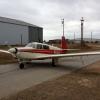
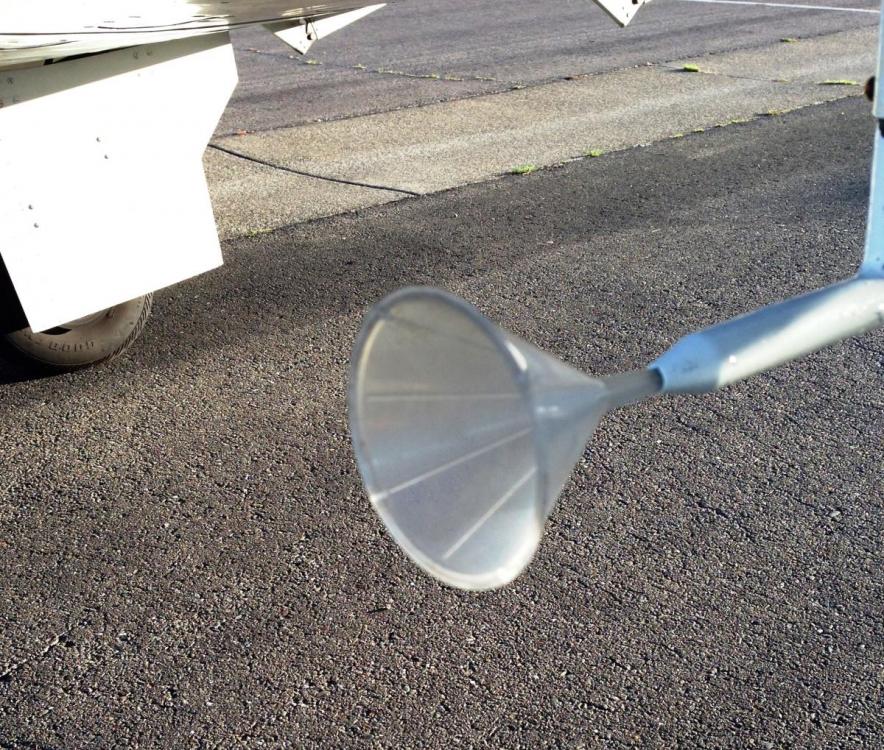


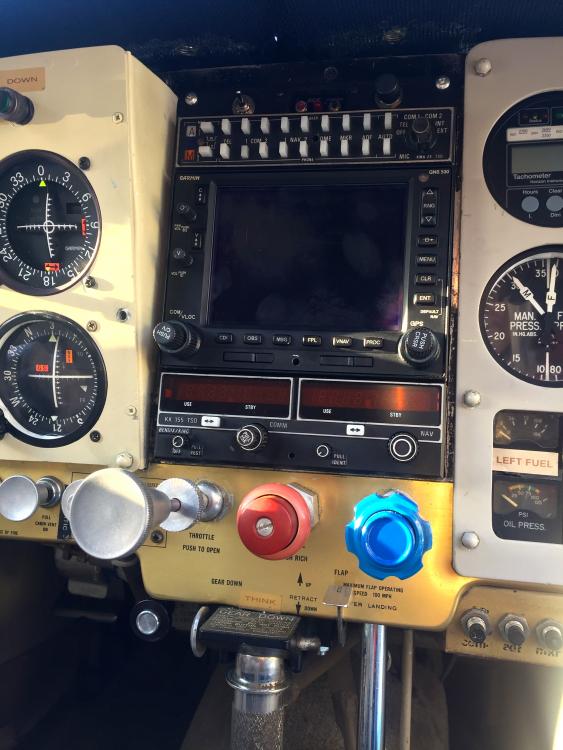
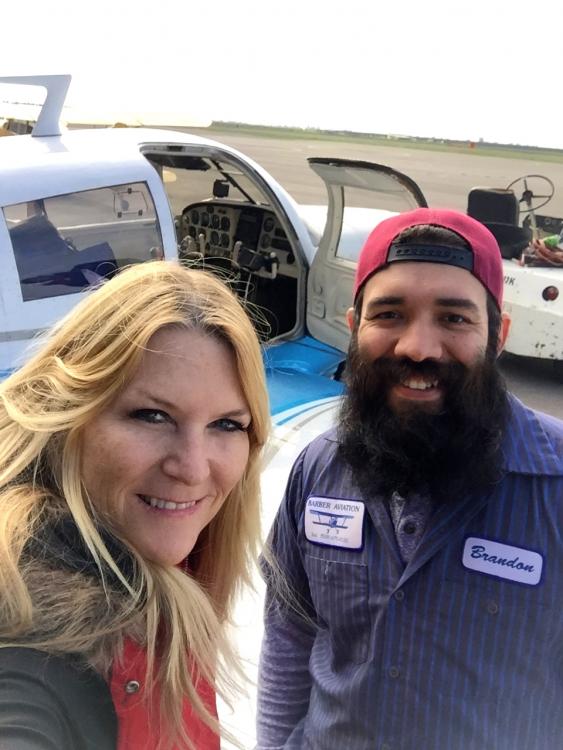
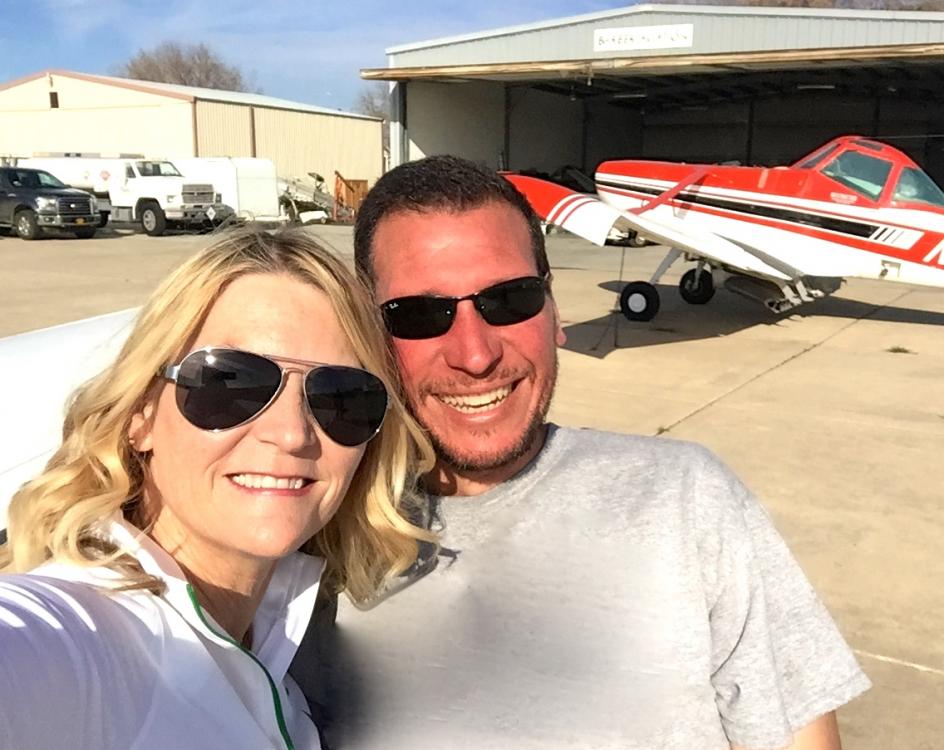



.thumb.png.7c67574d7b28f67b0b4a17760919b1ac.png)






